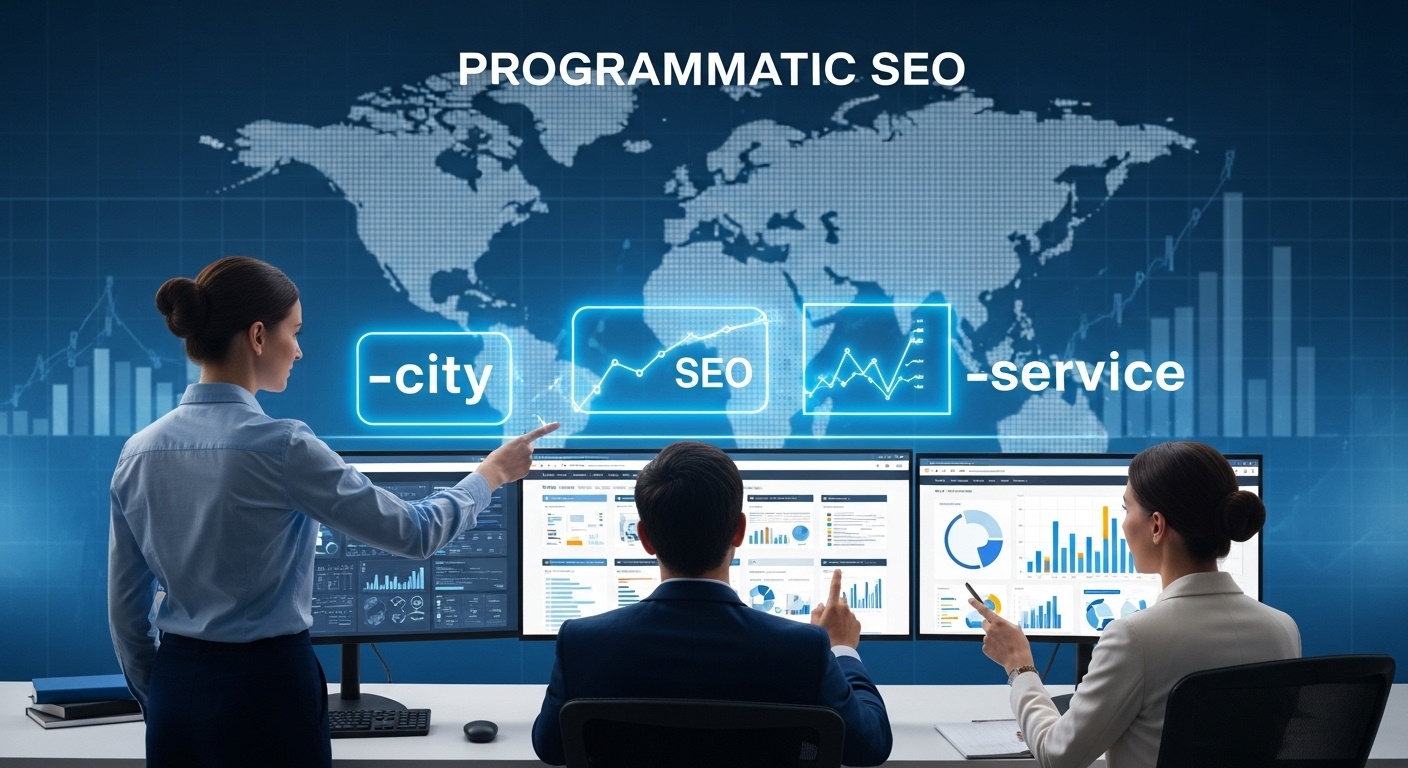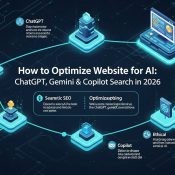
Programmatic SEO: Scaling Content Without Dilution
Programmatic SEO: Scaling Content Without Dilution
In a world where thousands of pages compete for every keyword, traditional SEO has one major limitation — speed. You can’t manually create and optimize hundreds or thousands of landing pages fast enough to capture long-tail traffic.
Enter Programmatic SEO — a system that lets you generate hundreds or even thousands of high-intent pages automatically, without sacrificing quality or user experience.
Used properly, programmatic SEO can multiply organic traffic and revenue within months. But if done carelessly, it can flood Google with thin or duplicate pages that get penalized.
ALSO, READ Small Business Guide to Cyber Incident Response & Recovery
This guide walks you through the complete 2026 framework for building scalable, automated, and authoritative programmatic SEO systems — the same method 24SevenHub deploys for service brands, directories, and SaaS platforms.
1. What Is Programmatic SEO?
Programmatic SEO is the process of automating the creation of optimized landing pages at scale using structured templates and datasets.
Instead of writing every page manually, you design one dynamic template — and populate it with variables like {city}, {service}, {price}, or {product} from your dataset.

Example:
/seo-services/lagos//seo-services/abuja//seo-services/port-harcourt/
All follow one optimized layout — each personalized to match search intent.
This technique powers huge brands like Booking.com, Yelp, and Canva’s template library.
2. Why Programmatic SEO Matters in 2026
2.1 Google Loves Structured Depth
Google’s evolving algorithm rewards contextually rich clusters — networks of related pages built around structured data. Programmatic SEO allows you to do this automatically.
2.2 User Intent Fragmentation
Search queries are now hyper-specific (“best web design company in Yaba” vs. “top SEO agency Nigeria”). Programmatic pages match these long-tail variants efficiently.
2.3 AI + Automation Advantage
New tools let you generate optimized content dynamically from verified datasets — avoiding thin or repetitive pages.
2.4 Compounding ROI
Once set up, a programmatic system continues generating organic traffic with minimal human input.
3. When Programmatic SEO Works Best
Use this strategy when:
- You serve multiple locations, services, or product variants.
- You have repetitive data structures (directory, real estate, jobs, courses).
- You want to capture long-tail, low-competition keywords.
Avoid it when:
- Your dataset is small (<20 entries).
- Your site lacks authority.
- You can’t maintain consistent quality or schema accuracy.
4. The 24SevenHub Framework for Programmatic SEO
We divide the system into five steps:
| Step | Description |
|---|---|
| 1 | Build the dataset |
| 2 | Design the dynamic page template |
| 3 | Optimize on-page elements |
| 4 | Automate publishing |
| 5 | Monitor, refine, and interlink |
Let’s break these down.
Step 1: Build the Dataset
Your dataset is the foundation. It can come from:
- Google Sheets / Airtable
- API (e.g., real estate listings, service categories)
- Internal CRM or CMS export
Columns might include:location, service, description, price, rating, slug.
Keep all fields clean and unique — automation reflects your data integrity.
Step 2: Design the Template
This is the skeleton each page will use.
Template must include:
- Dynamic Title Tag → “{Service} in {City} | 24SevenHub”
- Meta Description → pulled from dataset
- Header (H1)
- Image & schema markup variables
- CTA section (e.g., “Book a Free Audit in {City}”)
Use your CMS or static site generator (WordPress + ACF, Webflow CMS, or Next.js) to map variables to front-end placeholders.
ALSO, READ How SMEs Achieved SEO Growth with Smart Security
Step 3: On-Page Optimization
Each generated page must:
- Have a unique title, meta, and URL.
- Include unique combinations of structured data.
- Maintain 400–600 words of contextual content (can be partly automated with AI + human review).
- Feature internal links to the main pillar page (“/seo-services/”).
Schema Example (JSON-LD):
{
"@context": "https://schema.org",
"@type": "Service",
"name": "SEO Services in Lagos",
"provider": {
"@type": "Organization",
"name": "24SevenHub Digital"
},
"areaServed": "Lagos, Nigeria"
}
Step 4: Automate Publishing
Depending on your platform:
- WordPress: Use WP All Import + ACF + custom post type.
- Webflow: Sync Airtable → Webflow CMS → publish dynamically.
- Next.js / Astro: Fetch dataset → render static pages via build scripts.
Always use canonical tags to prevent duplication.
Step 5: Monitor, Refine & Interlink
- Check Google Search Console for indexing and coverage issues.
- Track which pages perform best — enrich top performers with manual content.
- Interlink programmatic pages to main clusters for authority flow.
- Use analytics dashboards to visualize traffic patterns by parameter.
5. Real-World Example: Programmatic SEO for a Service Business
Scenario: A cybersecurity agency (24SevenHub) wants to target all major Nigerian cities for “penetration testing services.”
Dataset fields:
| city | service | description | price | slug |
|---|---|---|---|---|
| Lagos | Penetration Testing | Enterprise web app testing for Lagos firms | ₦350,000 | lagos |
| Abuja | Penetration Testing | Secure assessment for Abuja companies | ₦330,000 | abuja |
Template output:
/penetration-testing/lagos//penetration-testing/abuja/
Each includes local testimonials, schema, and a booking CTA.
Within 3 months:
- 320 programmatic pages indexed
- 28% increase in impressions
- 3 new enterprise clients acquired organically
6. Avoiding Thin Content & Duplication
Google’s Helpful Content Update demands real value per page.
To avoid penalties:
- Vary introductions and summaries.
- Include local data (addresses, stats, testimonials).
- Generate dynamic FAQs per region.
- Add original media (e.g., city-specific images).
- Audit pages quarterly with Screaming Frog for duplicates.
7. Integrating Schema & Internal Linking
Structured data gives programmatic pages credibility. Combine schema types like:
ServiceLocalBusinessBreadcrumbListFAQPage
Then create internal link loops:City → Service → Category → Blog → City.
This builds authority pathways across your entire content map.
8. Programmatic SEO & Security
Automation can introduce vulnerabilities. Secure your workflow by:
- Sanitizing database inputs (to prevent injection attacks).
- Restricting API endpoints.
- Monitoring for unusual publishing activity.
- Running security scans before every deployment.
At 24SevenHub, we run automated CI/CD pipelines that validate content and code simultaneously — protecting both visibility and integrity.
9. Tools for Programmatic SEO (2026 Stack)
Data & Automation:
- Airtable / Notion
- WP All Import
- Make.com / Zapier
- Python Pandas
SEO Optimization:
- Screaming Frog
- SurferSEO
- Ahrefs API
Content QA:
- Grammarly API
- Copyscape Batch Scan
Deployment:
- Next.js + Vercel
- Cloudflare CDN
- GitHub Actions
10. Future of Programmatic SEO (2026–2030)
Expect five major evolutions:
- AI-assisted page personalization – content generated dynamically per user profile.
- Voice search integration – conversational templates replacing static copy.
- Entity-based indexing – Google understanding relationships over keywords.
- Serverless generation – pages built on-demand at edge locations.
- Continuous optimization loops – automatic testing and refinement of meta data.
Scalability + personalization = the holy grail of SEO automation.
ALSO, READ How to Build a Security-First Website: From Planning to Launch
11. Key Takeaways
| Lesson | Why It Matters |
|---|---|
| Programmatic SEO automates scale | Reach more long-tail users fast |
| Quality still matters | Avoid thin content penalties |
| Schema + structure amplify visibility | Rich results + trust |
| Data security protects credibility | Automation must be secure |
| Continuous refinement = compounding growth | Optimize, measure, iterate |
12. Conclusion
Programmatic SEO isn’t just about mass production — it’s about structured precision at scale.
When your system generates value-rich, secure, and optimized pages, you don’t chase traffic — traffic finds you.
That’s why at 24SevenHub, we don’t just build content systems; we build growth engines that merge automation, performance, and protection — designed to last through every Google update.
Scale smart. Protect your foundation. Win long-term.
FAQs
What is Programmatic SEO?
It’s the process of automating content creation using data-driven templates to scale SEO efficiently
Who should use Programmatic SEO?
Businesses with repetitive data, such as multi-location services, directories, or product catalogs.
Does Programmatic SEO risk Google penalties?
Only if pages are low-quality or duplicate. Quality templates and schema prevent issues
What tools help with Programmatic SEO?
Airtable, WordPress ACF, Screaming Frog, SurferSEO, and Cloudflare CDN.
Can Programmatic SEO boost revenue?
es. It increases organic reach and conversions by capturing long-tail, high-intent searches at scale




